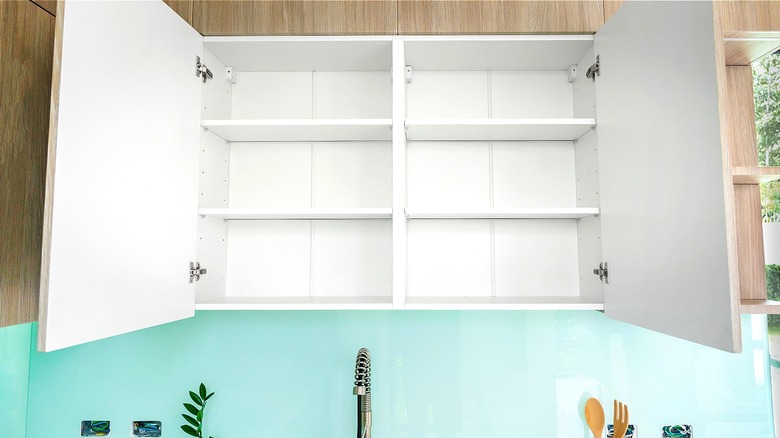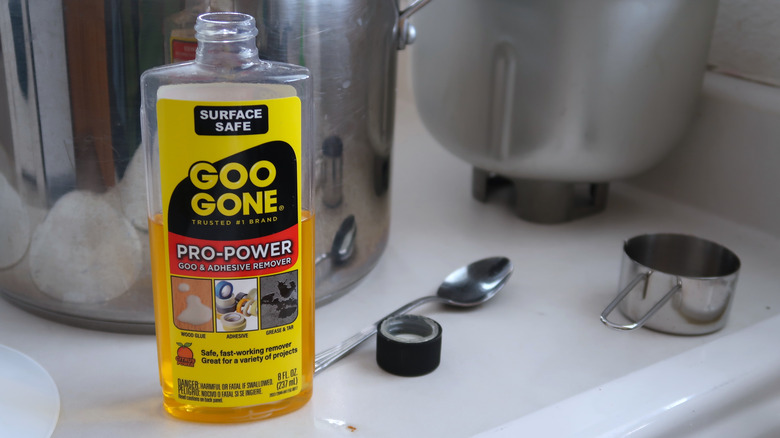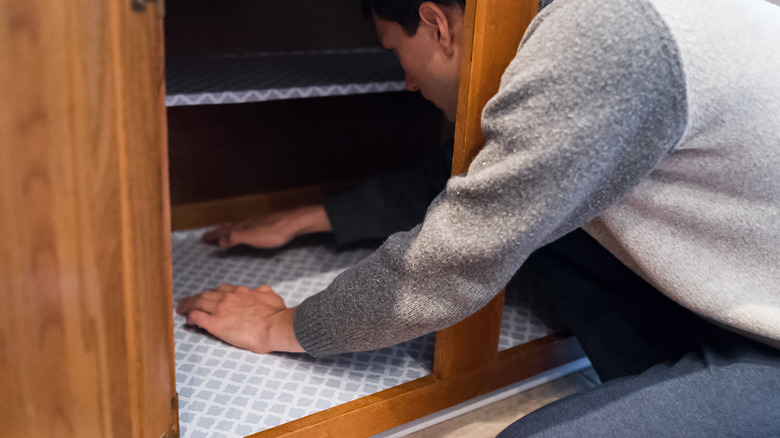Follow These Tips For Easy Adhesive Shelf Liner Removal
Shelf liners fulfill both a functional and cosmetic role in our homes. They can be perfect for keeping the shelves themselves clean or for giving safe harbors to our dishes and flatware to prevent scratching and breaking. In the past, popular shelf liners were usually adhesive, typically coming in sheets or rolls backed with sticky substances that kept them in place. However lovely they once were, though, this means that removing and replacing those same adhesive shelf liners can sometimes take a bit of ingenuity.
If you're stuck with faded, ripped, or dingy shelf liners in your cabinets, cupboards, and drawers, there are some simple tricks to removing them and facilitating the placement of new ones. While some shelf liners may come up fairly easily (with modern liners being much more removal-friendly), older, inexpensive liners like contact paper can sometimes seem impossible to fully remove.
Replacing old shelf liners with fresh ones can have a huge impact on the overall aesthetic of your space. To that end, we've lined up a few tips on how to show those old adhesive liners the door.
For stuck-on shelf liners, apply some heat
Removing shelf liners under the best conditions is fairly easy. You'll need some warm, soapy water, ideally in a spray bottle; a putty knife or scraper; and a heat source like a hair dryer or heat gun.
To remove glued-on shelf liners, begin by heating a corner of the liner to help loosen its grip on the material below. Note, it may be necessary to use a tool like a putty knife to get under the paper as you go. If you give a tug and the paper seems to be sticking, spritz the underside where it joins the surface with your water solution, which should allow greater release and lift. It may take a few tries, section by section, to get the entire sheet to loosen from its adhesive.
Once you've successfully removed the paper, hit tenacious spots with a putty knife and more water until you have a clean non-sticky surface to apply new shelf liners. For any remaining residue, you may need to turn to a commercial adhesive remover or rubbing alcohol.
Consider using acetone, turpentine, and/or sandpaper
If, however, the shelf liner seems especially difficult to remove, you may need to bring in the big guns, including acetone, turpentine, or other paint strippers. Obviously, you'll want to start with the mildest and work your way up. Be advised that the strength of the material will also be limited by the underlying surface. For example, you may want to avoid acetone on a wood shelf or drawer.
Turpentine or paint stripper can likely remove even the most gripping adhesive, but be careful with its use. Work in a well-ventilated area away from heat or flame, and make sure to wear gloves, a mask, and goggles when working with strong substances.
For especially tough liner removals, you can apply a thin coat of paint stripper over the surface of the paper with a brush. Leave for an hour, and return to remove it with a spatula or putty knife. Sandpaper can be used on stubborn spots, but be careful not to damage the surface below. Once the removal is complete, wipe the surface with soap and water.


